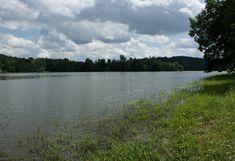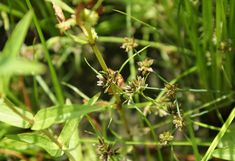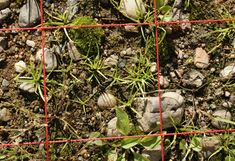Soil seed bank of ephemeral plants – The role of the soil seed bank as an integral part of the life history of ecologically extremely specialized ephemeral, semi-aquatic plant species
Duration: 01.07.2012-30.06.2016
The aim of the project funded by the Austrian Science Fund (FWF) was to assess phenotypic and genetic variation in the soil seed bank and yearly surface population of an ephemeral mudbank species in primary and secondary (anthropogenic) habitats.
Study species—The brown galingale Cyperus fuscus L. (Cyperaceae) is a summer-annual, self-compatible graminoid native to the Mediterranean Region and temperate Eurasia. It grows on muddy, sandy or gravelly substrata in habitats subjected to changing water levels and characterized by low competition of perennial plants. As a small ephemerophyte, it is a typical component of amphibious short annual vegetation, pioneer of land interface zones of rivers, lakes, pools and ponds, where it grows during periodic drying of these waters (class Isoëto-Nanojuncetea). In the Old World, the species itself is not threatened, but its habitat is a priority habitat of the European Habitats Directive (code: 3130) and includes many rare species. As other mudbank species, C. fuscus establishes a persistent soil seed bank, out of which seeds germinate under favorable conditions. The species can also be found in secondary habitats like gravel pits, wet fields and traditionally used fishponds and fish storage ponds, which are mainly used for breeding of common carp (Cyprinus carpio L.) in the Czech Republic and some other regions of Europe. Cyperus fuscus was introduced into North America in the late 1800s, where it is a potential threat to natural plant communities and rice agriculture. Characterization of the studied habitats—Every sampled locality is unique, but still a typical variant of one of three habitat types, which each face different hydrologic regimes. Suitable river habitats have become rare due to regulation of the water flow in the last centuries. The level of the streaming water is changing fast and dynamically and is therefore unpredictable, but the mudbanks are usually exposed in later summer. Because of the scarcity and ephemerality of mudbanks along rivers, it was hard to find suitable populations within one vegetation period in our study region. The two secondary habitats differ from rivers and from each other. Historical and extensively used fishponds face regular and managed changes of water level by man and climate. The sapropelic mud is usually thick, nutrient rich and exposed for a few months in summer. Fishponds can still be referred to as relatively natural habitats for mudbank species. After fish harvest in autumn, the fish is stored alive in the fish storage ponds before it is sold. The flooding and management is based on ad hoc decisions of the fish farmers and the eventual utilization as summer storage ponds makes the flooding regime even less predictable. Fish storage ponds can be flooded within hours and emptied after days or weeks. Most of the year, however, these concrete tanks are without water. The ground is stony and usually lacks a thick mud layer. High ground temperatures during summer may create drought stress. The nutrient content is comparatively low. To maintain the basins, the ground vegetation is removed either mechanically or, increasingly, with the use of herbicides. Fish storage ponds are therefore quite unnatural, but still suitable habitats for some mudbank species.
Objective 1 was to study the distribution of neutral genetic variation within and between the soil seed bank and the yearly surface population at study sites with different disturbance/management regimes in relation to total genetic variation in the species, with following hypotheses:
(1.1) The persistent soil seed bank functions as a “genetic memory”.
(1.2) Disturbance (i. e., flooding) increases genetic variation.
(1.3) There is genetic coherence at a larger geographic scale, i. e., across Europe.
Objective 2 was to study variation in quantitative traits associated with fitness as opposed to neutral genetic variation, with following hypotheses:
(2.1) Adaptation processes in local populations lead to locally adapted phenotypes.
(2.2) Ephemeral plants have adapted to natural water level fluctuations through increased phenotypic plasticity.



